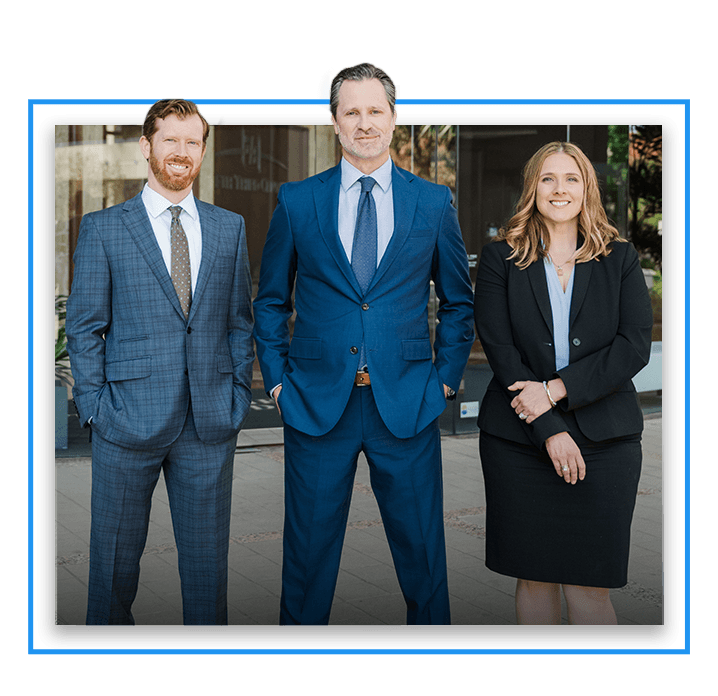
Tampa Spinal Cord Injury Attorney
About Spinal Cord Injuries
According to data compiled by the Christopher and Dana Reeve Foundation, there are 1.3 million persons in the United States suffering from a spinal cord injury. The injuries occur mainly from motor vehicle accidents, work-related accidents, sports and recreation accidents and falls. The spinal cord is the communication link between the brain and the rest of the body, therefore, injuries to the spinal cord can cause loss of feeling and motor control of the body. Treatment includes physical and occupational therapy to help the person to perform the basic tasks of living, build up strength and regain confidence and ability to control your life again.
Common causes of traumatic spinal cord injuries include:
- Motor Vehicle Accidents: Collisions involving cars, motorcycles, bicycles, or pedestrians.
- Falls: Falling from heights (ladders, roofs, trees) or slips and trips, especially in older adults.
- Sports Injuries: High-impact or contact sports like football, rugby, or hockey, as well as skiing or snowboarding accidents.
- Violence: Gunshot wounds, stab wounds. and blunt trauma during assaults.
- Workplace Accidents: Injuries from heavy machinery or construction site falls, and being struck by falling objects.
- Recreational Activities: ATV or dirt bike crashes, horseback riding falls, and ccidents during extreme sports like rock climbing or skydiving.
If you or someone you love sustained a spinal cord injury in an accident, you may be able to pursue legal action against the wrongdoer who caused your injuries. Our Tampa spinal cord injury lawyers at Robert Sparks Attorneys are ready to help you hold the negligent party accountable and secure your entitled compensation.
Call (813) 710-4816 or fill out our online contact form today to request a free consultation.
Common Types of Spinal Cord Injuries
Spinal cord injuries (SCI) occur when the spinal cord is damaged, often resulting in a loss of function, sensation, or mobility. The type and severity of injury depend on the location and extent of the damage.
The following are the two main types of SCIs:
- Complete Injury: This means a total loss of sensation and motor function below the level of injury. Therefore, no communication exists between the brain and the affected area of the spinal cord.
- Incomplete Injury: This means partial loss of sensation or motor function below the level of injury. Some signals can still pass through the damaged area, allowing varying degrees of movement or feeling.
Levels of Injury
There are six groups of nerves in the spine that fall under three categories: cervical, thoracic, and lumbosacral.
- Cervical vertebrae are those at the top of the spine/neck.
- Thoracic vertebrae are located in the middle of your spine.
- Lumbosacral vertebrae are located at the bottom of the spine and tailbone region.
Injuries to the high cervical nerves (C1-C4 vertebrae) often result in the most severe injuries, including arm, hand, and even leg paralysis. Due to the location of the cervical vertebrae, individuals who sustain spinal cord injuries may have difficulty speaking, eating, and even breathing. The most severe outcomes of spinal cord injuries are paraplegia and quadriplegia.
Symptoms for Spinal Injuries
Symptoms vary depending on the severity of the spinal cord injury, such as:
- Loss of Sensation: Numbness or reduced ability to feel temperature, touch, or pain below the injury site.
- Motor Function Loss: Weakness or paralysis in affected areas:
- Quadriplegia/Tetraplegia: Loss of function in all four limbs (cervical injuries).
- Paraplegia: Loss of function in the lower body (thoracic, lumbar, or sacral injuries).
- Loss of Reflexes: Absent or diminished reflexes, such as in the knees or ankles.
- Spasms or Spasticity: Uncontrolled muscle contractions or stiffness below the injury.
- Pain: Localized pain at the injury site or neuropathic pain below the injury level.
- Bladder and Bowel Control Issues: Inability to control urination or bowel movements (neurogenic bladder or bowel).
- Breathing Difficulties: Reduced lung function or inability to breathe independently (cervical injuries, especially at C1-C4).
- Blood Pressure Irregularities: Low blood pressure or sudden spikes (autonomic dysreflexia, a potentially life-threatening condition in individuals with injuries above T6).
- Temperature Regulation Issues: Inability to sweat or shiver appropriately, affecting body temperature control.
- Sexual Dysfunction: Impaired sexual function or loss of sensation in genital areas.
- Tingling or Numbness: Pins-and-needles sensations or complete sensory loss below the injury.
- Burning or Shooting Pain: Neuropathic pain caused by nerve damage.
- Fatigue: Reduced energy levels due to decreased mobility or autonomic system involvement.
- Postural Instability: Difficulty sitting or standing upright due to weak trunk muscles (commonly with thoracic or higher injuries).
- Changes in Muscle Tone: Either flaccidity (reduced tone) or hypertonicity (increased tone or spasticity).
Depression and Spine Injuries
Many people who suffer spinal cord injuries also experience depression. It is not uncommon for emotional and psychological trauma to accompany serious physical injury. Spinal cord injuries can seriously impede a person’s ability to live a normal, enjoyable life. They may no longer be able to walk, breathe, eat, or speak normally. This is why spinal damage victims may be able to seek financial compensation for noneconomic damages such as loss of enjoyment of life from the wrongdoer.
Spinal Cord Injury Recovery
Through rehabilitation, some people who have sustained spinal cord injuries can recover. According to the National Institute of Neurological Disorders and Stroke, no two people will experience the same recovery. Rehabilitation experts focus not only on regaining physical strength, but on providing emotional support. Spinal cord injury victims can participate in physical therapy to regain muscle strength as well as occupational therapy to help them re-learn how to perform everyday tasks.
Treatment for spinal cord injuries is proportionate to the severity and type of trauma, and can include:
- Medication to relieve pain or help you breathe
- Neck and/or back braces to keep your spine immobilized
- Surgical procedures to repair or remove vertebrae/bone shards
- Physical and occupational therapy
Let Our Firm Help You
At Robert Sparks Attorneys, we understand the life-altering challenges that spinal cord injuries bring, and we are here to help you navigate this difficult journey. Our experienced team is committed to advocating for your rights and securing the compensation you deserve, whether it’s for medical expenses, rehabilitation, lost wages, or pain and suffering. We take pride in offering compassionate, personalized representation, allowing you to focus on your recovery while we handle the complexities of your case.
To discuss your case and see if you have a claim, contact a Tampa spinal cord injury lawyer at Robert Sparks Attorneys.

At our firm, we have a reputation built on winning. Our ultimate goal is to protect and pursue your rights and your family’s well-being. With decades of collective experience, we are highly qualified and committed to securing the best legal outcomes for individuals who need the skill, dedication, and compassion of our trial attorneys.

Strength. Trust. Results.
Read What Our Clients Say In Their Own Words.
-
“The professionalism of staff, the promptness of responses to questions, and the overall guidance through the process after my accident was astounding. Rob and Garrett were absolutely AMAZING.”- Daner J.
-
“I am very satisfied with the exceptional work that Robert Sparks Attorney has done for me and my case. Garrett Riley handled my case. I really appreciate how communicative and persistent he was.”- Alexis M.
-
“The communication with him and his team is fantastic, and you really feel they are with you every step of the way with your case. He is very caring and understanding, and takes initiative and leads the charge with moving your case along.”- Mary A.
-
“My cases both had successful outcomes and I am certain that this as a result of his knowledge and work ethic. His attention was primarily focused on my health and well being prior to anything else.”- Melissa E.
-
“Although, I have to put a special highlight on Cheryl! She is one of the sweetest and most compassionate people I know. She truly cares about their clients as if they were friends and had know each other for years.”- Nicole S.
-
“It was non-stop communication with both Rob and Cheryl. The road was long but this team is adamant and steadfast on their mission and dedication to each client.”- Michelle N.
-
“Rob, thank you so much for helping with all of this and know that I hold you and your staff in the highest professional esteem. No matter what was thrown at us, you had an answer that countered.”- Former Client
-
“Our family cannot begin to express appreciation for the legal expertise provided by attorney Robert Sparks and his team at Robert Sparks Attorneys!”- Former Client
